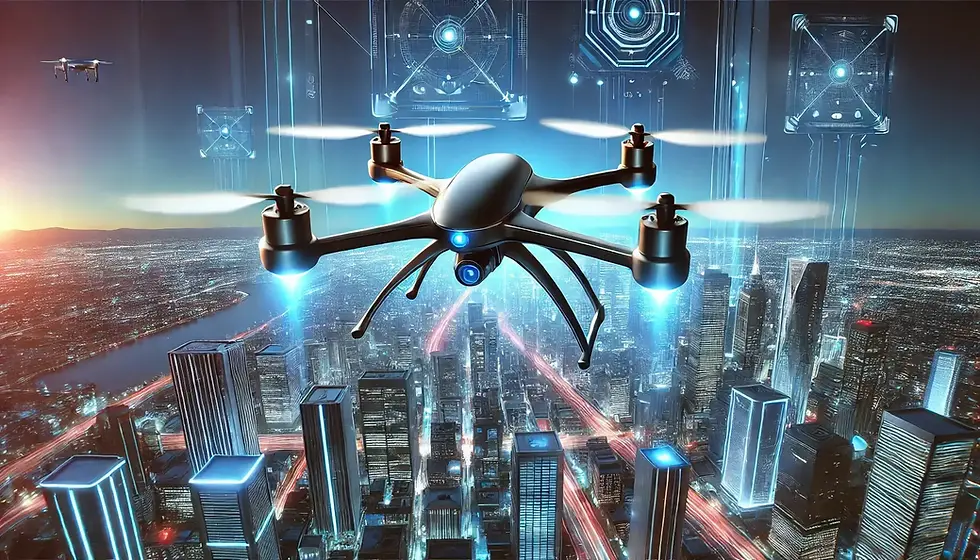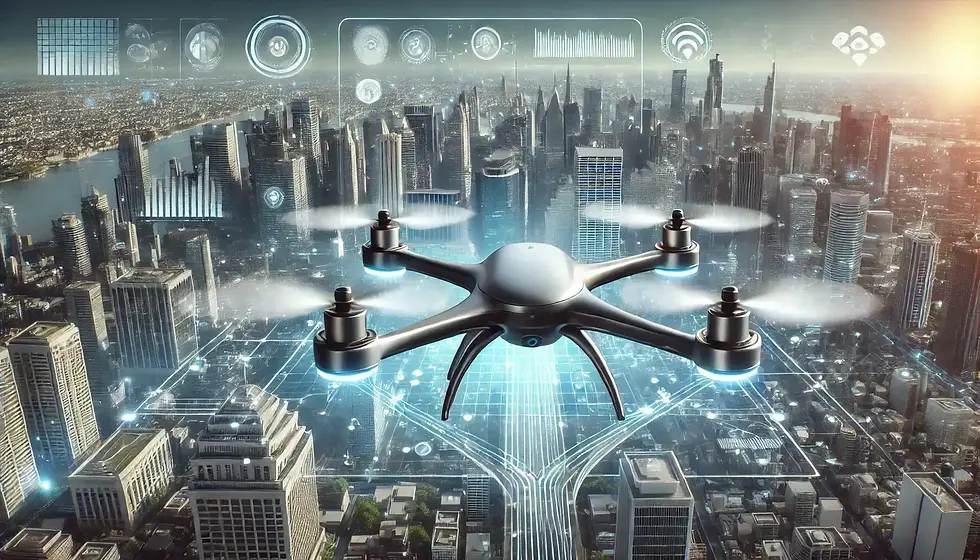Drones: How They Work and the Technology Behind Them
- Kalyan Bhattacharjee
- Mar 27
- 2 min read
Updated: 4 days ago

Drone Technology: How UAVs Work and Their Applications
Introduction
Drones, also known as unmanned aerial vehicles (UAVs), have revolutionized various industries, from military defense to agriculture and entertainment. These aerial machines operate without a human pilot on board and are controlled either remotely or autonomously through AI-based navigation systems. In this blog, we will explore how drones work, their core technologies, and their applications in modern society.
How Drones Work
Drones function using a combination of propulsion systems, navigation technology, sensors, and communication links.
The main components of a drone include:
Propulsion System: Drones use electric motors powered by lithium-ion or lithium-polymer batteries. Larger UAVs may use fuel-powered engines.
Flight Control System: This system includes gyroscopes, accelerometers, and onboard computers that stabilize and control the drone’s movement.
GPS & Navigation: Global Positioning System (GPS) allows drones to determine their exact location and follow predefined flight paths.
Communication Link: Drones use radio frequency (RF) signals, Wi-Fi, or satellite communication to send and receive commands from the remote pilot or an autonomous control system.
Sensors & Cameras: Advanced drones are equipped with infrared cameras, thermal sensors, LiDAR, and obstacle-avoidance systems for real-time data collection and navigation.
The Technology Behind Drones
Autonomous Flight Technology
Some drones can operate autonomously using AI algorithms that process sensor data to make real-time decisions.
Computer Vision & Machine Learning
Drones equipped with AI-powered cameras can recognize objects, track movements, and analyze terrain.
LiDAR (Light Detection and Ranging)
Used for 3D mapping, navigation, and obstacle detection.
5G Connectivity
Enhances real-time data transmission, improving the accuracy and responsiveness of drones in various applications.
Swarm Technology
Multiple drones can operate in coordination using AI, beneficial for search-and-rescue missions and military operations.
Applications of Drones
Military & Defense: Surveillance, reconnaissance, and targeted strikes.
Agriculture: Crop monitoring, pesticide spraying, and soil analysis.
Logistics & Delivery: Companies like Amazon and UPS are exploring drone-based package deliveries.
Aerial Photography & Filmmaking: Used in media, cinematography, and event coverage.
Disaster Management: Drones help in search-and-rescue missions and assessing damage after natural disasters.
Urban Planning & Construction: Surveying land, inspecting infrastructure, and improving city planning.

Conclusion
Drones continue to evolve with advancements in AI, battery technology, and communication systems. As regulations improve and technology advances, UAVs will become an even more integral part of everyday life. From commercial applications to humanitarian efforts, drones represent a major shift in how we interact with technology and the world around us.
unmanned aerial vehicle, uav meaning, drone what is, when was the drone created, who invented the drone, what is the drone technology, what is anti drone technology, latest drone technology, drone technology, what are military drones, drone detection, tech drone, drone tec, drone technical, drone tech, anti drone tech, high tech drones, fintech shield

Comments